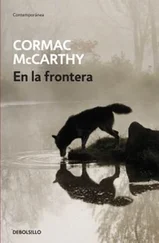“… tht bedsteads n gas pipes cn b used as rcving aerials is well-kn0n I mslf hv dn this,” Wireworm’s boasting, “als0 I cn trn pian0 wire in2 tuning coil fashion dtctrs from wshing s0da n a needle mst I obtain lcnses 4 ths wll we gt inspctrs chcking r pots n pans 2 C tht they cnfrm 2 rgulatns I sgst cmpaign cvl ds0bdns agnst such impsitions…”
Transcribing his clicks, Serge senses that Wireworm’s not so young: no operator under twenty would bother to tap out the whole word “fashion.” The spacing’s a little awkward also: too studied, too self-conscious. Besides, most bugs can improvise equipment: he once made Bodner’s spade conduct a signal and the house’s pipes vibrate and resonate, sending Frieda running in panic from her bath…
Serge moves up to five hundred metres. Here are stronger, more decisive signals: coastal stations’ call signs, flung from towering masts. Poldhu’s transmitting its weather report; a few nudges away, Malin, Cleethorpes, Nordeich send out theirs. Liverpool’s exchanging messages with tugboats in the Mersey: Serge transcribes a rota of towing duties for tomorrow. Further out, the lightship Tongue’s reporting a derelict’s position: the coordinates click their way in to the Seaforth station, then flash out again, to be acknowledged by Marconi operators of commercial liners, one after the other. The ships’ names reel off in litany: Falaba, British Sun, Scania, Morea, Carmania, each name appendaged by its church: Cunard Line, Allen, Aberdeen Direct, Canadian Pacific Railway, Holland-America. The clicks peter out, and Serge glances at the clock: it’s half a minute before one. A few seconds later, Paris ’s call-sign comes on: FL for Eiffel. Serge taps his finger on the desktop to the rhythm of the huge tower’s stand-by clicks, then holds it still and erect for the silent lull that always comes just before the time-code. All the operators have gone silent: boats, coastal stations, bugs-all waiting, like him, for the quarter-second dots to set the air, the world, time itself back in motion as they chime the hour.
They sound, and then the headphones really come to life. The press digest goes out from Niton, Poldhu, Malin, Cadiz: Diario del Atlántico, Journal de l’Atlantique, Atlantic Daily News… “Madero and Suárez Shot in Mexico While Trying to Escape”… “Trade Pact Between”… “Entretien de”… “Shocking Domestic Tragedy in Bow”… “Il Fundatore”… “Husband Unable to Prevent”… The stories blur together: Serge sees a man clutching a kitchen knife chasing a politician across parched earth, past cacti and armadillos, while ambassadors wave papers around fugitive and pursuer, negotiating terms. “Grain Up Five, Lloyds Down Two”… “Australia All Out for Four Hundred and Twenty-one, England Sixty-two for Three in Reply”… Malin’s got ten private messages for Lusitania, seven for Campania, two for Olympic: request instructions how to proceed with… the honour of your company on the occasion of… weighing seven and a half pounds, a girl… The operators stay on after the Marconigrams have gone through, chatting to one another: Carrigan’s moved to President Lincoln, Borstable to Malwa; the Company Football Team drew two-all against the Evening Standard Eleven; old Allsop, wireless instructor at Marconi House, is getting married on the twenty-second… His tapper-finger firing up her spark gap… Short, then long… Olympic and Campania are playing a game of chess: K4 to Q7… K4 to K5… They always start K4… Serge transcribes for a while, then lays his pencil down and lets the sequences run through the space between his ears, sounding his skull: there’s a fluency to them, a rhythm that’s spontaneous, as though the clicks were somehow speaking on their own and didn’t need the detectors, keys or finger-twitching men who cling to them like afterthoughts…
He climbs to six hundred, and picks up ice reports sent out from whalers: FLOEBERG/GROWLER 51N 10′ 45.63″ lat 36W 12′ 39.37 long… FIELD ICE 59N 42′ 43.54″ lat 14W 45′ 56.25″ long… Compagnie de Télégraphie sans Fil reports occasional light snow off Friesland. Paris comes on again; again the cycle pauses and restarts. Then Bergen, Crookhaven, Tarifa, Malaga, Gibraltar. Serge pictures gardenias tucked behind girls’ ears, red dresses and the blood of bulls. He hears news forwarded, via Port Said and Rome, from Abyssinia, and sees an African girl strumming on some kind of mandolin, jet-black breasts glowing darkly through light silk. Suez is issuing warnings of Somali raiders further down the coast. More names process by: Isle of Perim, Zanzibar, Isle of Socotra, Persian Gulf. Parades of tents line themselves up for him: inside them, dancers serving sherbet; outside, camels saddled with rich carpets, deserts opening up beneath red skies. The air is rich tonight: still and cold, high pressure, the best time of year. He lets a fart slip from his buttocks, and waits for its vapour to reach his nostrils: it, too, carries signals, odour-messages from distant, unseen bowels. When it arrives, he slips the headphones off, opens the silence cabin’s door to let some air in and hears a goods train passing half a mile away. The pulsing of its carriage-joins above the steel rails carries to him cleanly. He looks down at his desk: the half-worn pencil, the light’s edge across the paper sheet, the tuning box, the tapper. These things-here, solid, tangible-are somehow made more present by the tinny sound still spilling from the headphones lying beside them. The sound’s present too, material: Serge sees its ripples snaking through the sky, pleats in its fabric, joins pulsing as they make their way down corridors of air and moisture, rock and metal, oak, pine and bamboo…
Above six hundred and fifty, the clicks dissipate into a thin, pervasive noise, like dust. Discharges break across this: distant lightning, Aurora Borealis, meteorites. Their crashes and eruptions sound like handfuls of buckshot thrown into a tin bucket, or a bucketful of grain-rich gravy dashed against a wash-boiler. Wireless ghosts come and go, moving in arpeggios that loop, repeat, mutate, then disappear. Serge spends the last half hour or so of each night up here among these pitches, nestling in their contours as his head nods towards the desktop and lights flash across the inside of his eyelids, pushing them outwards from the centre of his brain, so far out that the distance to their screen seems infinite: they seem to contain all distances, envelop space itself, curving around it like a patina, a mould…
Once, he picked up a CQD: a distress signal. It came from the Atlantic, two hundred or so miles off Greenland. The Pachitea, merchant vessel of the Peruvian Steamship Company, had hit an object-maybe whale, maybe iceberg-and was breaking up. The nearest vessel was another South American, Acania, but it was fifty miles away. Galway had picked the call up; so had Le Havre, Malin, Poldhu and just about every ship between Southampton and New York. Fifteen minutes after Serge had locked onto the signal half the radio bugs in Europe had tuned into it as well. The Admiralty put a message out instructing amateurs to stop blocking the air. Serge ignored the order, but lost the signal beneath general interference: the atmospherics were atrocious that night. He listened to the whine and crackle, though, right through till morning-and heard, or thought he heard, among its breaks and flecks, the sound of people treading cold, black water, their hands beating small disturbances into waves that had come to bury them.
One night, at about half past two, Serge looks out of his bedroom window and sees a white figure gliding over the Mulberry Lawn, skirting the Orchard’s border as it heads towards the Crypt Park’s gates. It looks like Sophie; he leans out further but the figure disappears from view before he can identify it. The experience startles him-not least because it plays out in the real and close-up space around the house an aspect of some scenes that he occasionally intuits but never quite pins down when riding the dial’s highest reaches: vague impressions of bodies hovering just beyond the threshold of the visible, and corresponding signals not quite separable from the noise around them-important ones, their recalcitrance all the more frustrating for that reason. He sees these things, and hears, or half-hears, them as well, quite frequently-usually as he’s straddling the wavelength-border between consciousness and sleep. This white figure tonight’s no somnolent vision, though: it’s a real person, of the size and shape of Sophie, and dressed the way she dresses when she goes to bed each night, to boot. The next day, he visits her in her lab and asks if she was wandering about in night-skirts last night.
Читать дальше












